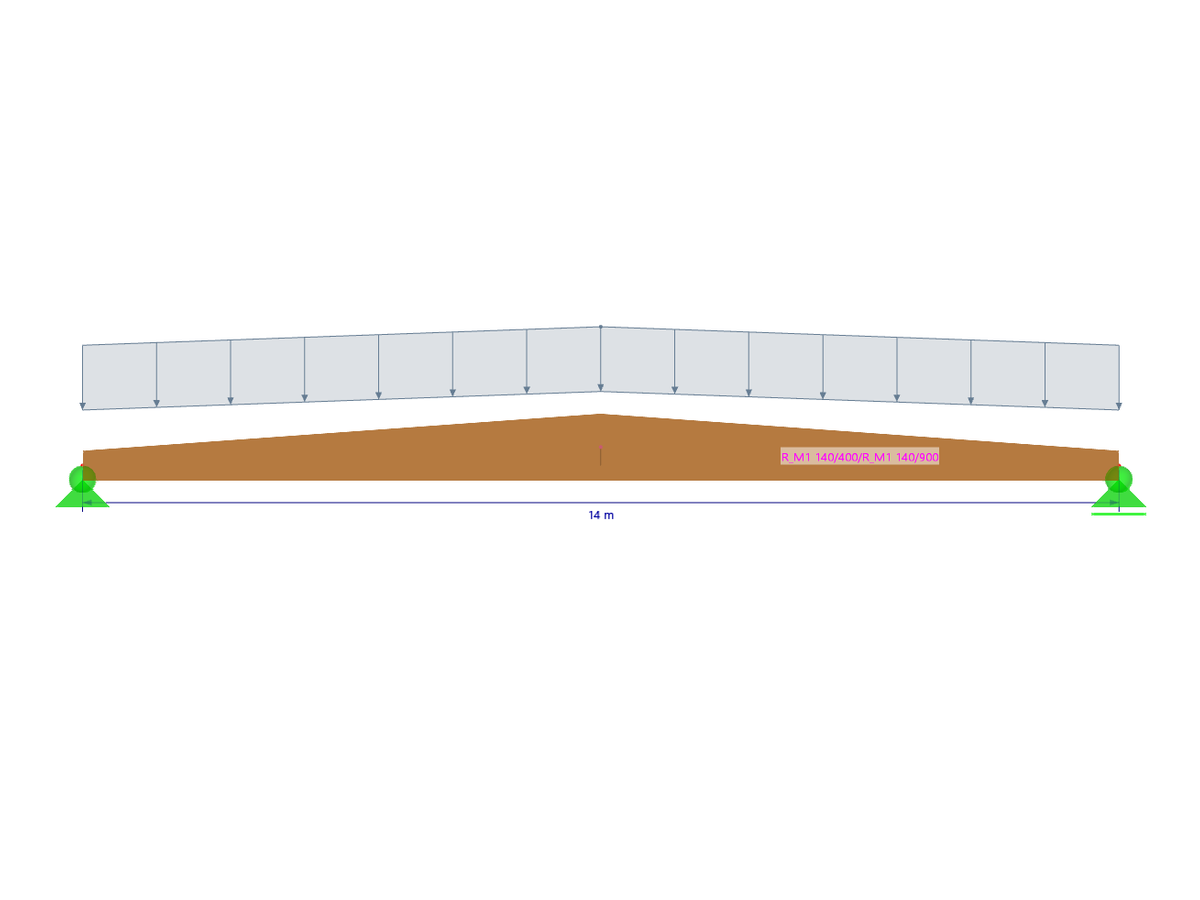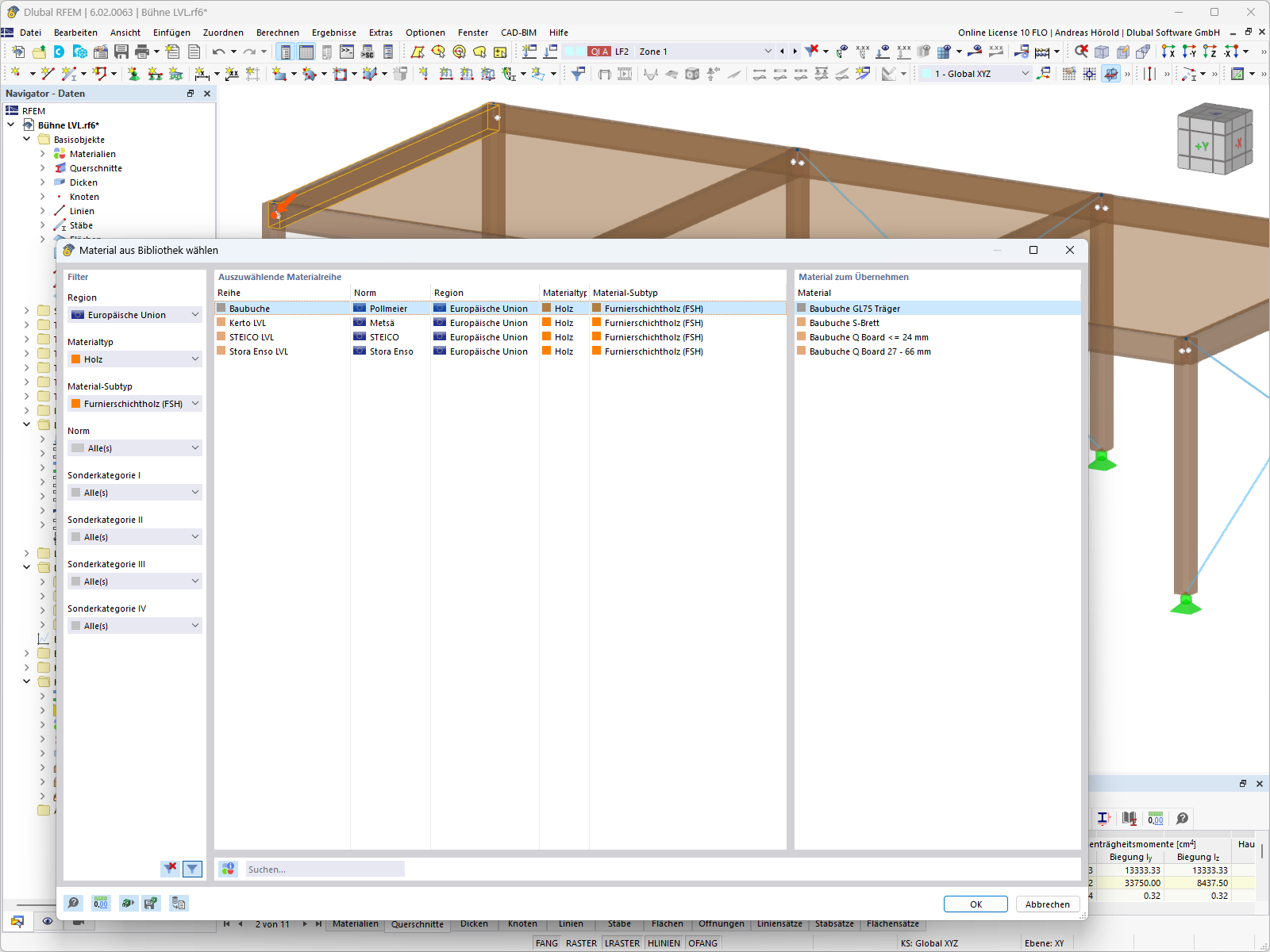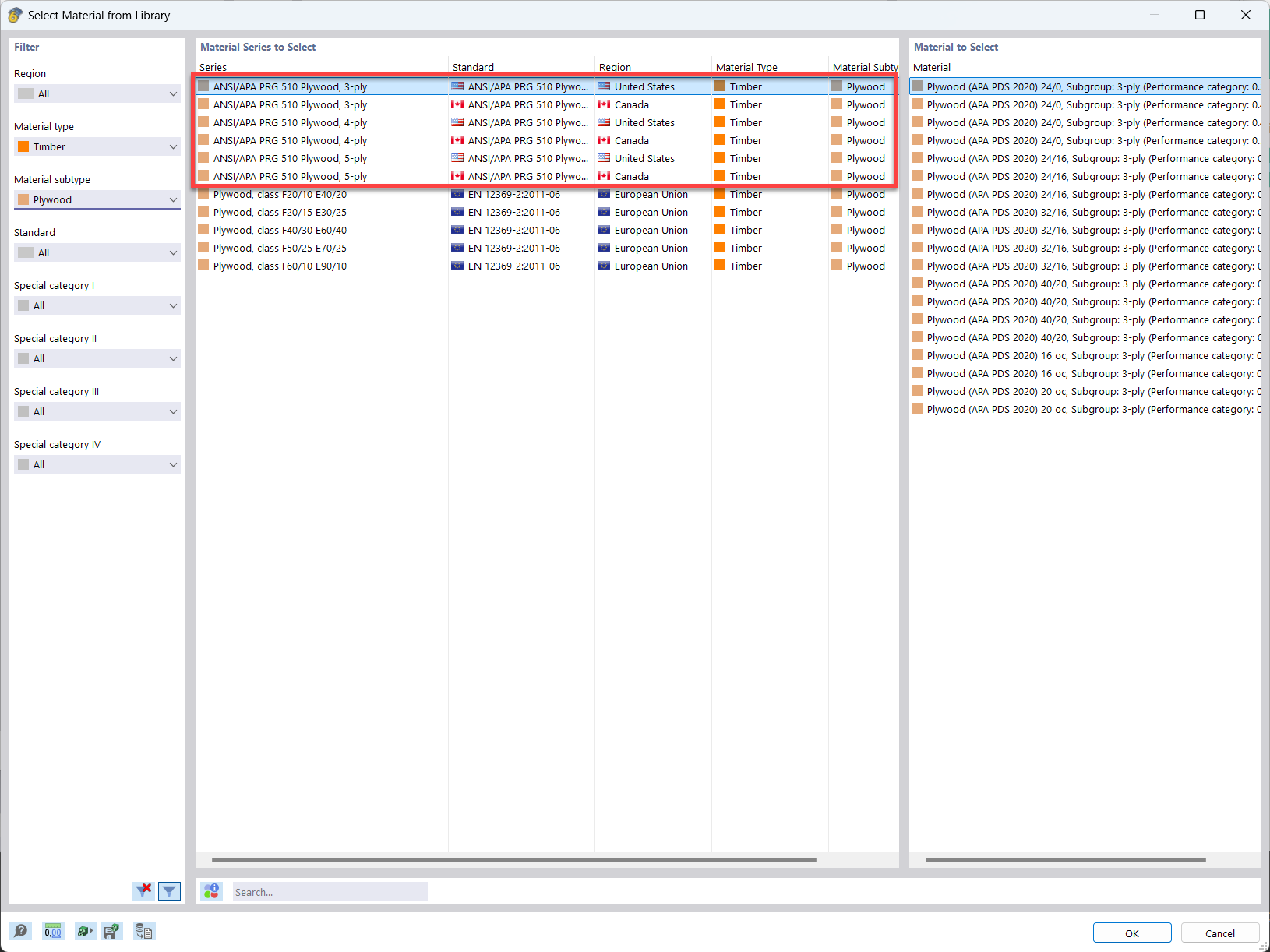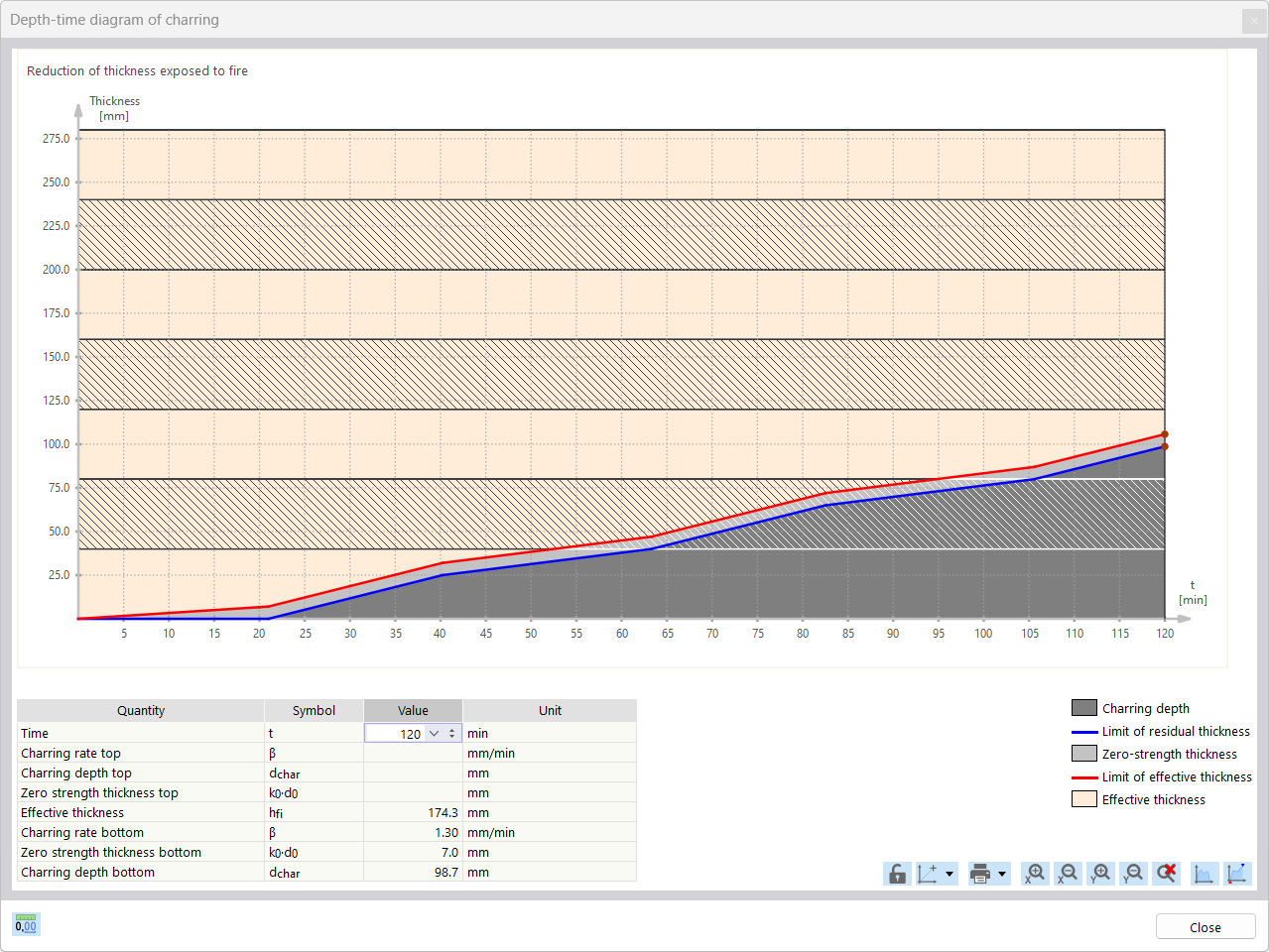You can design the wall ends (at the transition to the ceilings) in RF‑CONCRETE Surfaces. As a result, you obtain the amount of required reinforcement in [cm²/m].
Alternatively, you can insert result beams in the areas with the governing tension force in the walls and thus integrate the resultant surface internal forces in these areas into member internal forces. In this case, it is necessary to ensure that the FE mesh refinement is sufficient in the integration area. This procedure is also described in the technical article of our Knowledge Base, which you can find under Links below.
Afterwards, you can design the result beams in RF‑CONCRETE Members (for a tension force in this case) using the member internal forces that originally come from the surfaces. Thus, you obtain the required tension reinforcement in [cm²] for a defined area.
The result evaluation corresponds approximately to the theory of deep beams. This is described in detail in the technical article about the "Design of Deep Beams in RFEM".






































.png?mw=512&hash=4a84cbc5b1eacf1afb4217e8e43c5cb50ed8d827)





















